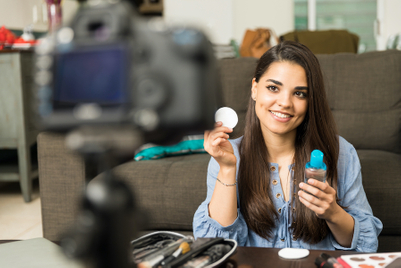
“With the rise of digital, marketers can be more scientific than ever before but consumers are less rational than ever before," VanBoskirk said.
“We live in an age of empowerment, where consumers have access to all the information there is to make a decision. The reality is, we don’t often evaluate all our options and arrive at the right answer, but marketers believe we do,” she added.
VanBoskirk argued that marketers believe in a highly structured, data-driven, and increasingly measurable future, with Forrester estimating that US$100 billion will be spent on digital marketing methods by 2019.
“Yet we are not rational beings. I climb mountains knowing I will suffer from altitude sickness, I run marathons knowing I will be in pain. Have you ever eaten too much? Put off something till the next day or busted your monthly budget?
“Even with access to perfect information, we constantly make decisions that are neither logical nor rational,” she said.
Faced with the never-ending deluge of choices, consumers are reporting high levels of stress and anxiety when needing to make decisions, according to research conducted by Forrester.
Categories of choice
“Decision-making creates stress, so as human beings we rely on mental shortcuts to preserve our mental energy and stick to patterns when making choices. It is important for marketers to focus on reducing decision stress and not on coercing a transaction,” VanBoskirk added.
Forrester has identified four categories of choices – Routine, Leisure, Urgent and Important – defined by how much time a consumer has to make a decision and how much is at stake.
Routine choices involve items that consumers will regularly purchase, such as weekly groceries, with decisions driven by habit, convenience and price.
Leisure choices are those with a lot of time before a decision needs to be made, such as deciding on birthday presents. Here, recommendations and filtering of choices hold a high value.
Urgent choices are situations where consumers are under tight time constraints, such as the need to get a flight to attend a funeral. These decisions are driven by factors like credibility, validation and risk mitigation.
Important choices are defined by high stakes and a lot of time for decision making, such as buying a house. Here, information and guidance are key factors.
VanBoskirk shared two tips for marketers, firstly to understand that context will determine the choice type and secondly, that one must identify the primary decision type that best fits your product.
“While your product could be purchased under any of the four conditions depending on context, there will be one primary category it will fit into which will inform how you can better engage with consumers, to help them choose you.
“Routine choices are automatic decisions, so the focus needs to be on reducing friction on the path to purchase. For leisure choices, brands should strive to provide curated options to help cut down on the clutter.
“With urgent choices, brands must instil confidence and establish credibility, while for important decisions, providing guidance and facilitating access to information should be priorities,” she added.
Anchoring the brand
VanBoskirk admitted that incorporating and executing such an approach to marketing initiatives is no easy task for marketers.
“It is not a straightforward thing, but understanding the psychology behind why customers choose, will lend a competitive edge in this already crowded landscape,” she said.
Above all else, VanBoskirk urged marketers to invest in becoming an anchor brand, pointing to Virgin Airlines’ efforts to unseat British Airways, as one example of a best practise advocated by Forrester.
“To be an anchor brand is to be the one against which all others are compared, and to be the default choice consumers fall back on when they can’t make up their mind, which happens more often than you’d think,” VanBoskirk added.




.jpg&h=334&w=500&q=100&v=20250320&c=1)
.jpg&h=334&w=500&q=100&v=20250320&c=1)
.jpeg&h=334&w=500&q=100&v=20250320&c=1)
.jpg&h=334&w=500&q=100&v=20250320&c=1)
.jpg&h=334&w=500&q=100&v=20250320&c=1)
.jpg&h=334&w=500&q=100&v=20250320&c=1)



.jpg&h=268&w=401&q=100&v=20250320&c=1)




.png&h=268&w=401&q=100&v=20250320&c=1)
.jpg&h=268&w=401&q=100&v=20250320&c=1)